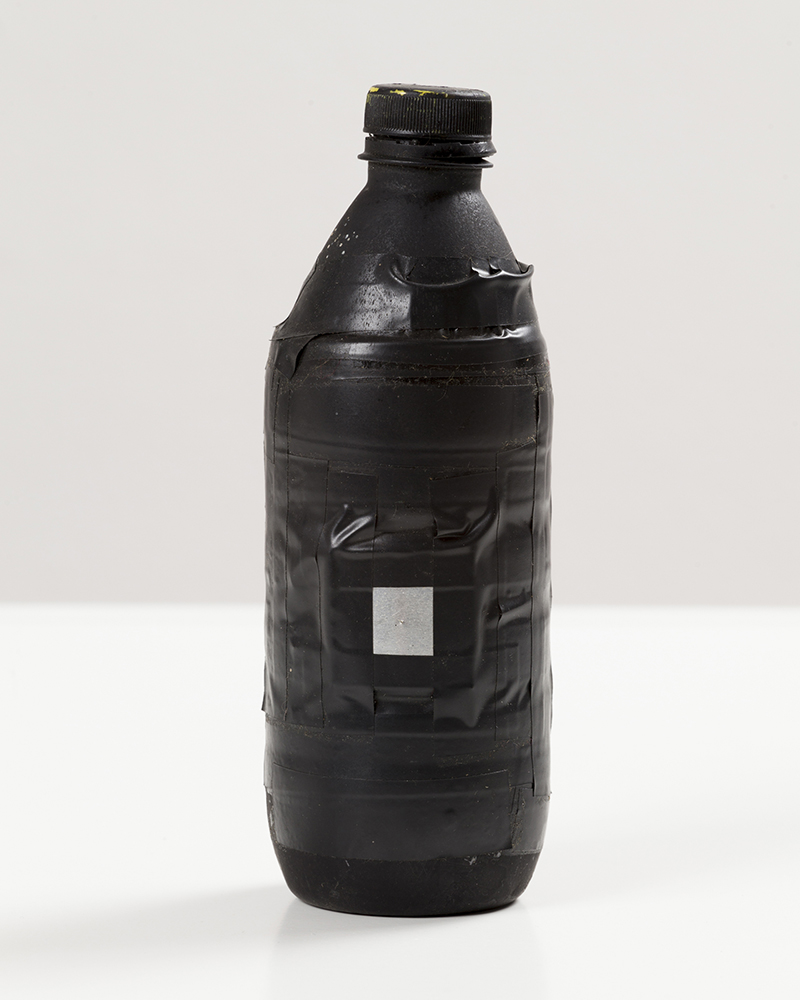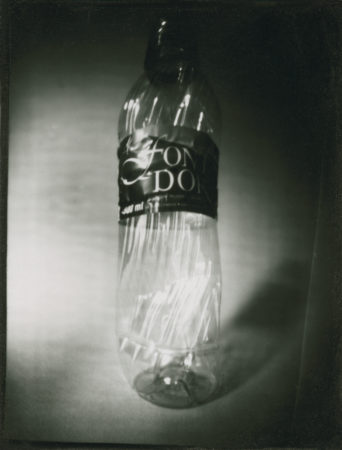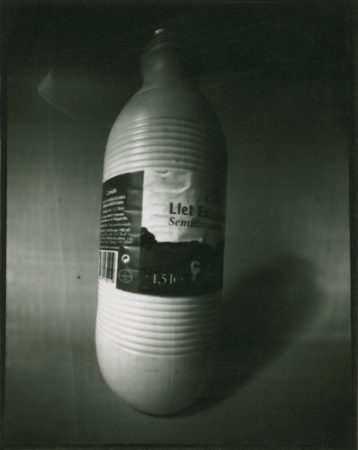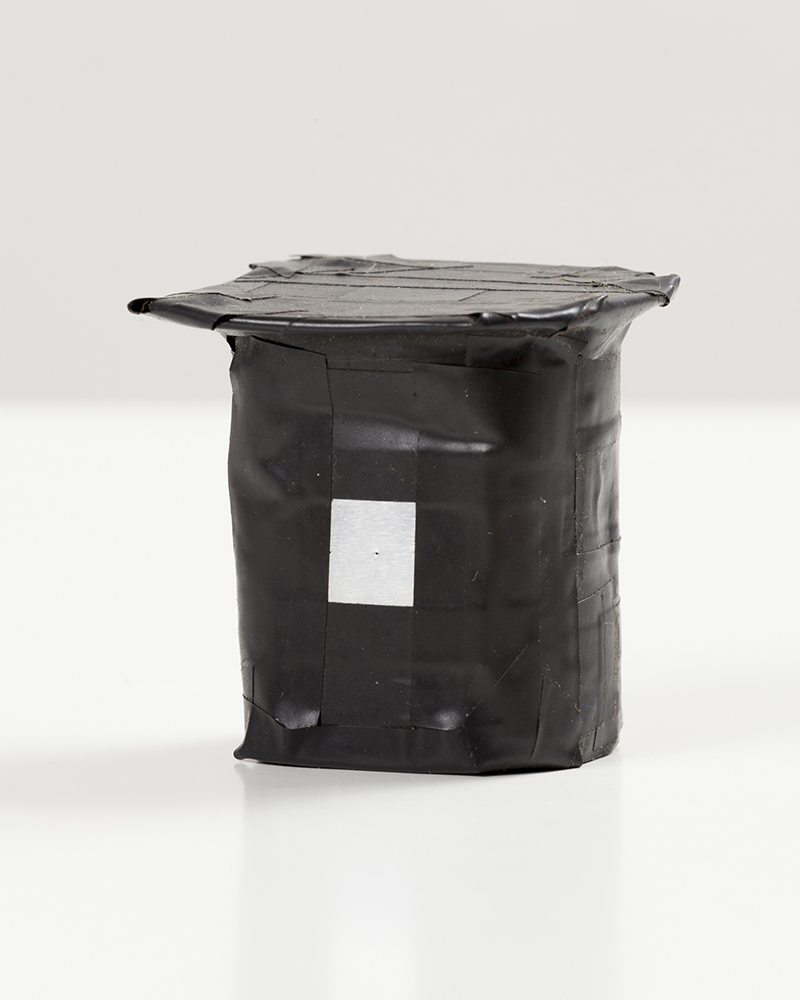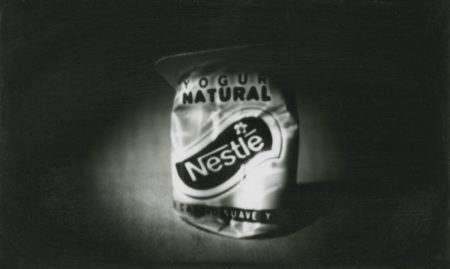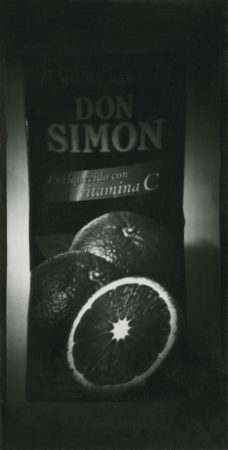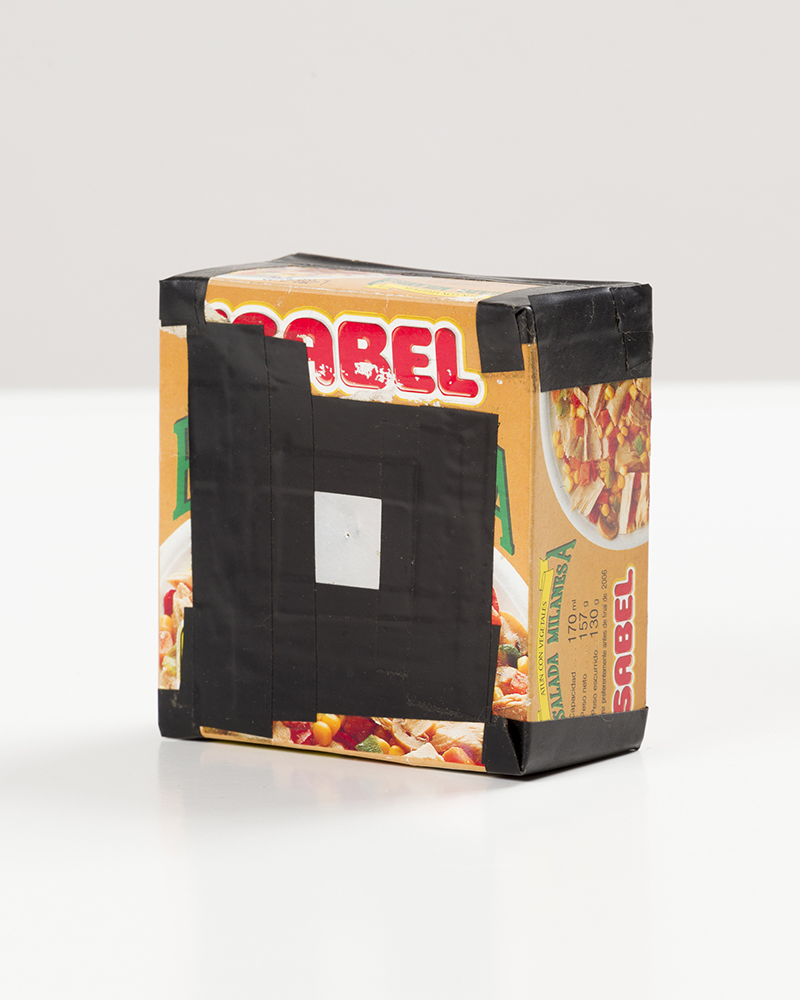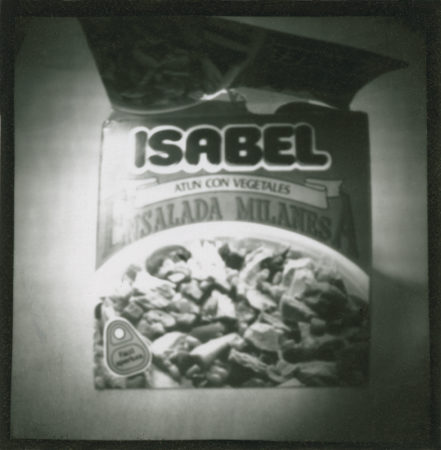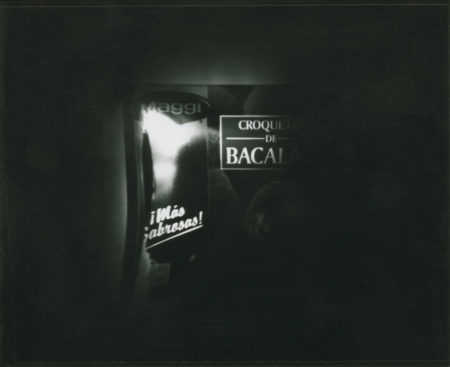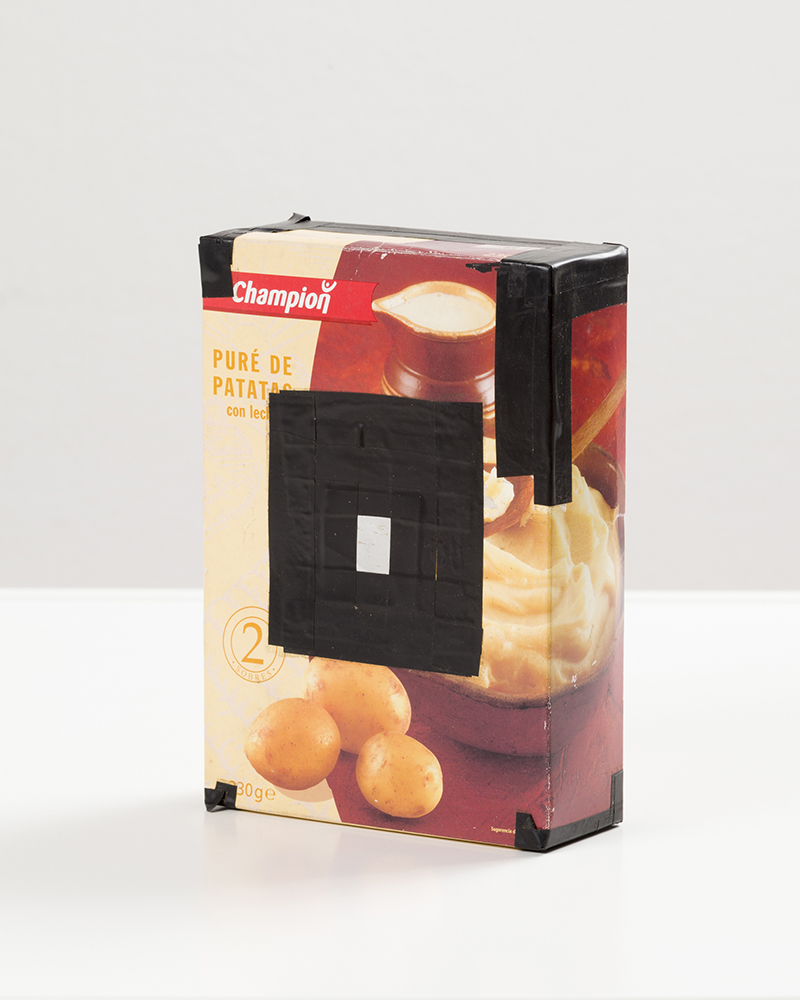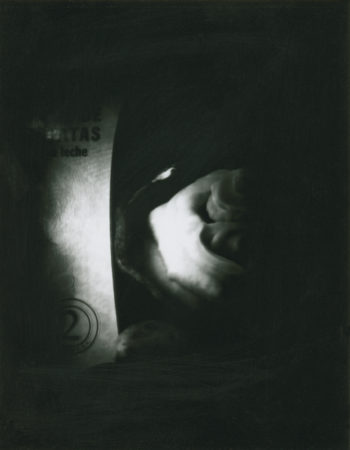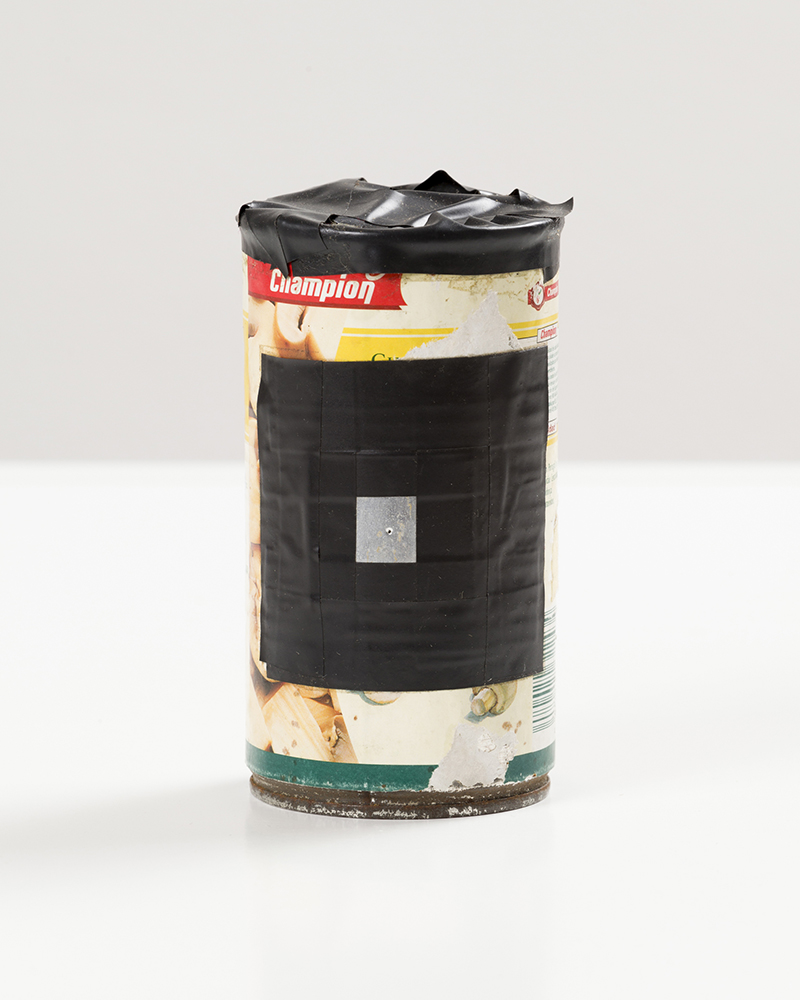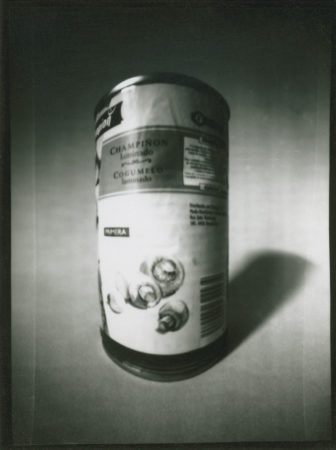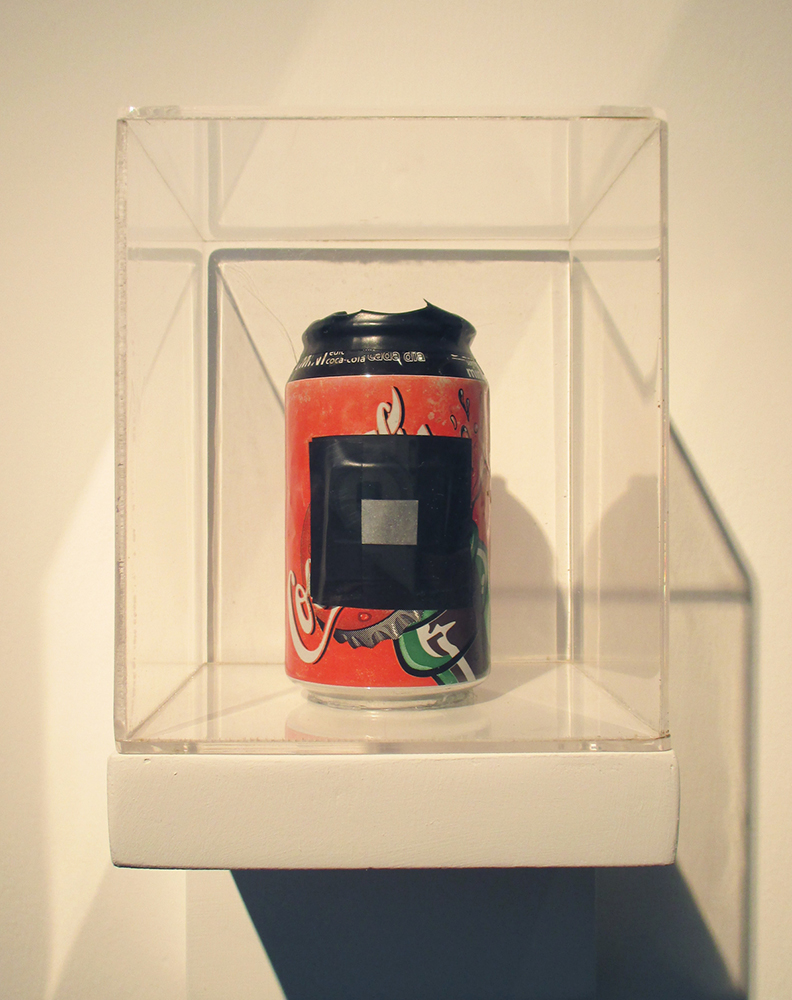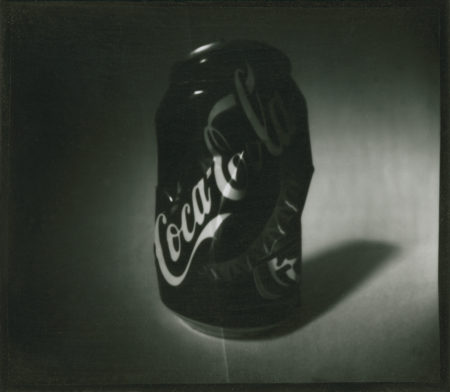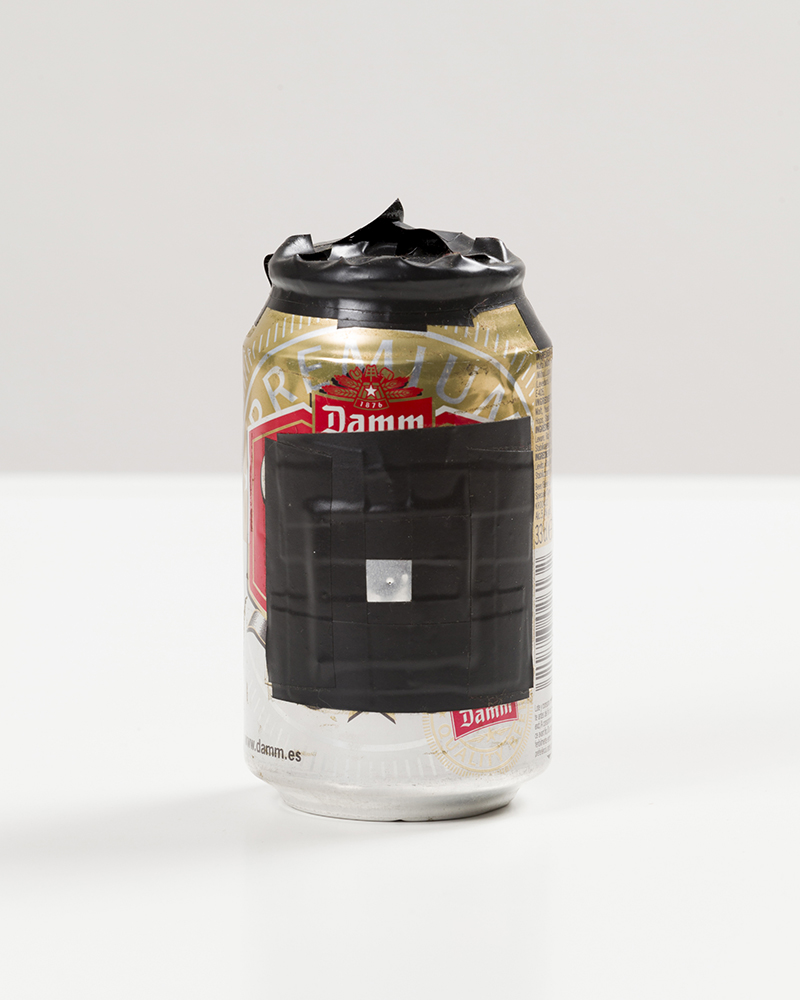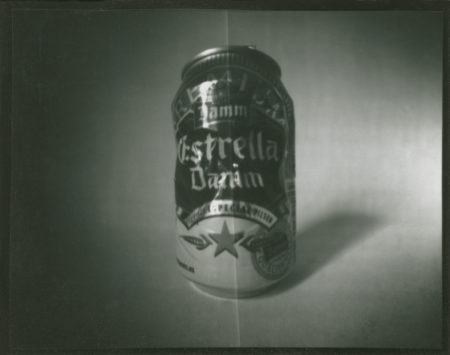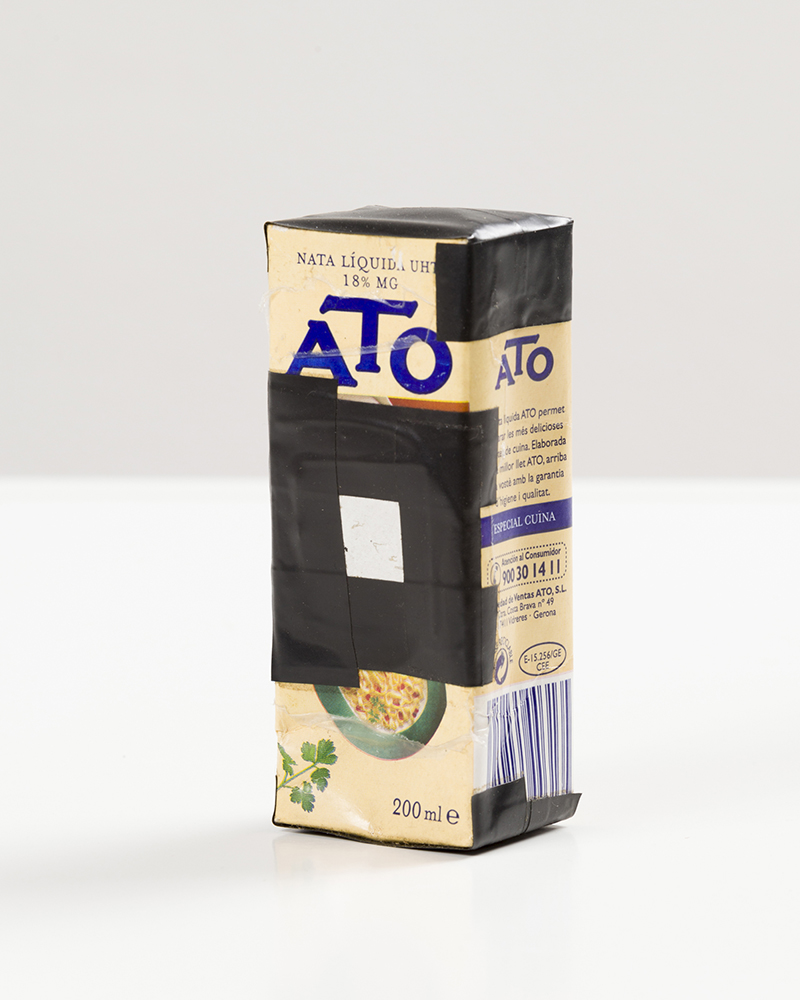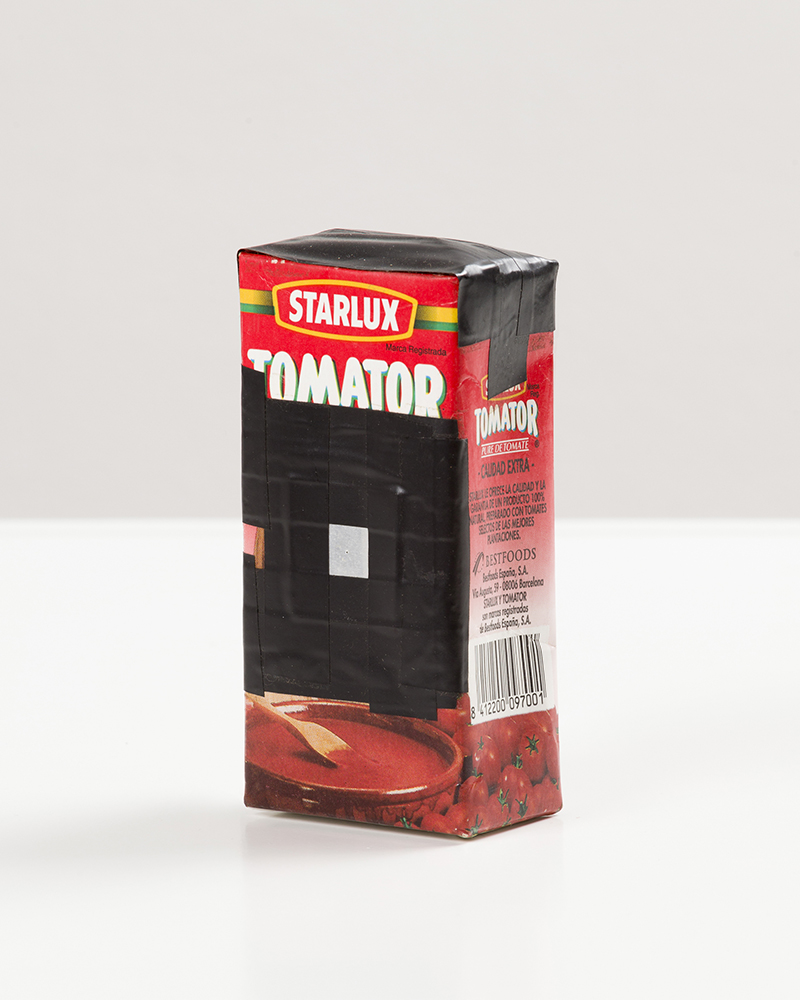Miguel Aguirre
Doble cuerpo
Double Body
Towards the end of his book Postmodernism or The Cultural Logic of Late Capitalism Fredric Jameson recalls that Marx in a passage of his manifesto urgently calls us to do the impossible: to think the historical development of capitalism “at the same time” in terms positive and negative; he requires us, in other words, to put into practice a way of thinking that be able to conceive the clearly denigrating features of capitalism and, simultaneously, its extraordinary emancipated dynamics: all in a concept, and without any of the trials attenuates the strength of its opposite. Jameson designates this exercise as “dialectic”.
Within what we call “production circuit” in the post-industrial society, the photographic project entitled Double Body lies in the specific fields of consumption and removal, and specifically in the intermediate space-time.
It consists of the photographic reproduction of a series of objects. Each one of these is a package of food – solid or liquid – produced industrially. The function for which it was created, i.e., contain and preserve, has finished. Therefore it is a useless object, a mere body without content that must be discarded.
However, a last use is possible: be a photographic model. And a camera. Because each of these containers models for another with the same characteristics but became a pinhole camera. There is an active-passive confrontation of the same. One absorbs from the other the only thing that it has: image. So, the camera-container returns to “refill” its empty – even if only for a few minutes- with light waves reflected by the other, in a game that symbolically we suggested analogous to consumption that we make of the actual content of each package. Once obtained the negative nothing prevents to fulfil its destiny: to meet others just like him – in the form or function – in the waste container.
Miguel Aguirre
Barcelone, June 2002
